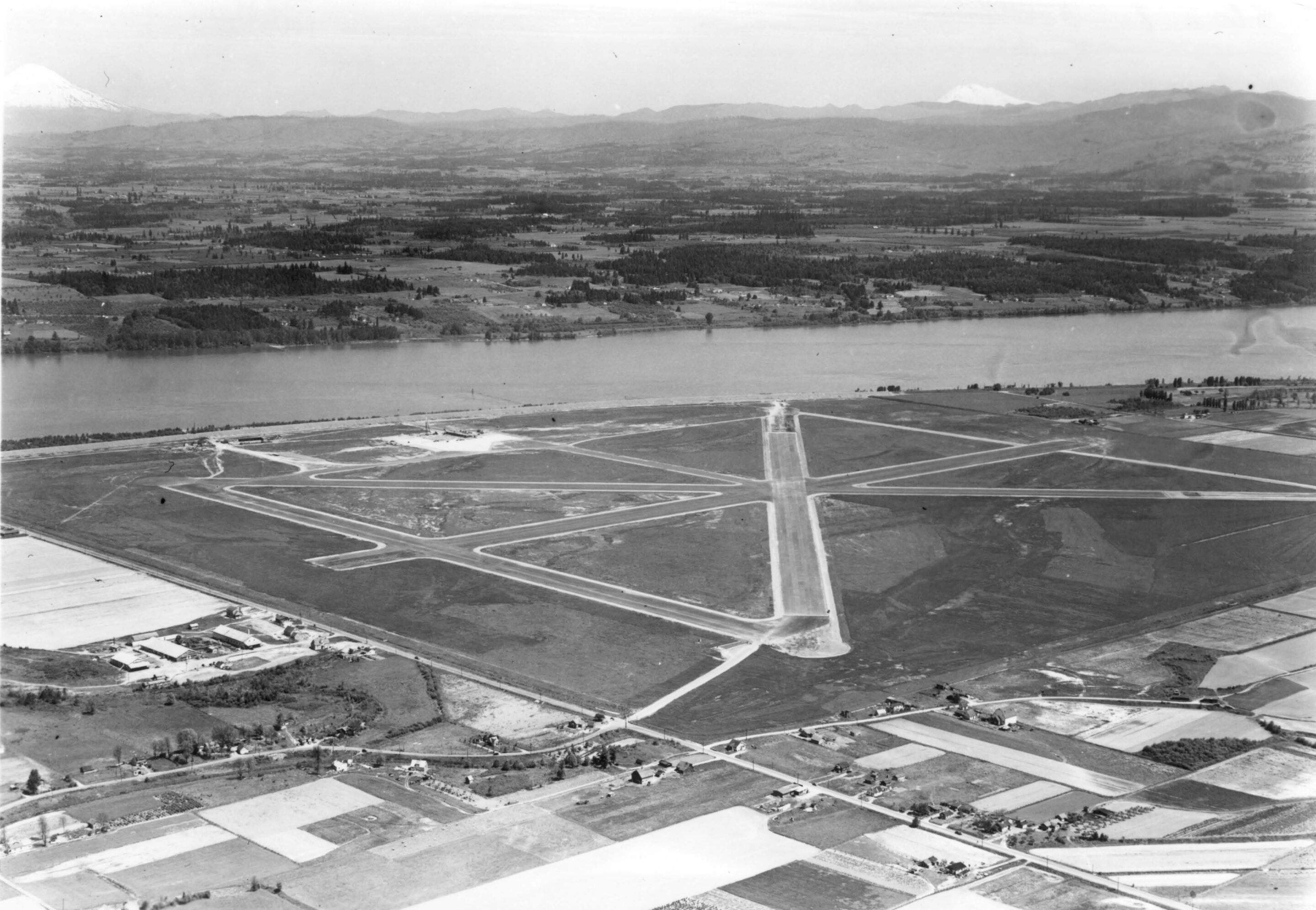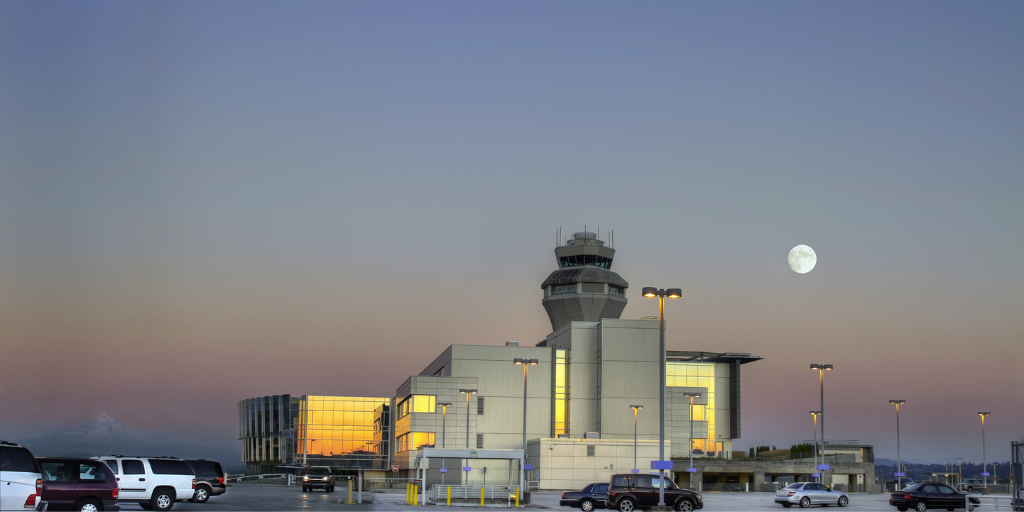To fully experience Oregon and the picturesque Pacific Northwest, a stop at Portland International Airport (PDX) is essential. From a simple grass airstrip to a thriving international gateway, PDX has been instrumental in linking people and fueling economic growth in the region.
In essence, the airport’s history is a narrative of continuous expansion, agility, and transformation. So, secure your ticket now—minus the security line hassles—and get ready for liftoff as we delve into the captivating history of Portland International Airport.
By choosing PDX, you’re not just picking a travel spot; you’re becoming part of a rich historical tapestry.
Early Beginnings
Portland Airport’s story began in the early 1920s when it was established as a small, grassy airfield known as “Swan Island Airport.” At that time, aviation was in its infancy, and this airfield primarily served as a landing spot for barnstormers and adventurous aviators. The airport was established on two locations: one on Swan Island, and the other on the floodplain of the Columbia River.
Opening its doors for limited use on September 14, 1927, the airport celebrated with a notable landing by Charles Lindbergh. He was on a nationwide tour, piloting The Spirit of St. Louis. Nevertheless, the airport didn’t undergo any substantial transformations until 1935.
In the midst of the Great Depression, the Works Progress Administration (WPA) funded infrastructure projects nationwide. Specifically, Swan Island Airport received a $1.3 million grant. Consequently, the airport developed paved runways and up-to-date facilities. As a result, this crucial funding paved the way for the airport’s future expansion and importance in the transportation sector.
The Birth of of the PDX Airport

Portland Airport, 1940
In 1940, the outbreak of World War II led the U.S. Army to take control of Swan Island Airport. Renamed as “Columbia Airport,” this shift marked a key milestone in the airport’s history. Specifically, the facility became instrumental in the war effort.
During the conflict, Columbia Airport served as a critical hub for war production and antisubmarine patrols. This military role led to considerable infrastructure improvements. As a result, the airport could accommodate larger aircraft and increased air traffic.
In retrospect, the wartime transformations fundamentally changed Columbia Airport’s capabilities. Furthermore, they set the stage for its post-war evolution as a robust aviation center.
Post-War Transformation
With World War II’s end, the airport again transitioned, this time into the hands of the Port of Portland. In 1948, it was officially renamed “Portland International Airport,” or PDX, a name that has endured to this day. The airport’s International Air Transport Location Identifier was adopted after World War II by adding X to the existing National Weather Service identifier. Both Los Angeles and Phoenix have the same identifiers.
The 1950s ushered in a new era of aviation with the advent of jet aircraft. To accommodate these faster and more substantial planes, PDX underwent further expansion, including constructing a modern terminal building and longer runways. This investment positioned PDX as a major air travel hub in the Pacific Northwest. The main terminal construction project cost an estimated $4.25 million and took two years to complete.
The Rise of Passenger Travel
After the war, PDX began to resemble its current form. Throughout the 1960s and 1970s, commercial aviation witnessed remarkable growth, and the airport evolved to meet the demands of the traveling public.
In 1961, a noteworthy upgrade occurred: the control tower received a $750,000 plastic bubble. Inside it, radar technology allowed for visibility through fog and rain.
Fast-forward to the mid-60s, PDX introduced a convenient second-floor waiting room. This innovation enabled passengers to board planes using covered gangways, enhancing their comfort.
By 1966, the main runway had been extended to 8,000 feet. Notably, the terminal we use today opened its doors in 1968 and underwent two expansions later on. The era saw the addition of modern baggage carousels, state-of-the-art radar systems, and a selection of eateries.
As the 1970s dawned, a new concourse costing $680,000 made its debut. Capable of accommodating a Boeing 747, it set the stage for major airlines like Northwest and Airwest. These companies began operations from the newly constructed $2 million concourse.
Modernization
The late 20th century and early 21st century brought further modernization and expansion projects to PDX, enhancing its reputation as a world-class airport.
In recent years, PDX has been a pioneer in sustainable aviation practices. The airport’s commitment to environmental stewardship is evident in its LEED-certified terminal, use of renewable energy, and efforts to reduce greenhouse gas emissions. These initiatives have earned PDX recognition as one of the greenest airports in the world.
In 2019, PDX welcomed over 20 million passengers, emphasizing its critical role in the Pacific Northwest region. Interestingly, this high footfall not only enhances Portland’s economy but also increases its global connectivity.
In the following year, a notable expansion took place at the airport. Specifically, six additional gates were integrated into Concourse E, located on the terminal’s north side, to boost capacity.
These strategic developments help PDX adapt to the growing demand for air travel. Furthermore, they cement its reputation as a significant transportation hub for years to come.
The Future
As Portland’s population continues to grow, so does the demand for air travel. PDX has ambitious plans for the future to meet this demand while maintaining its commitment to sustainability.
The PDX Next project, a multi-billion-dollar investment, aims to enhance the airport’s infrastructure, including expanding the terminal, modernizing the concourses, and improving ground transportation options. After starting as a grassy floodplain airfield, the $2 billion construction project will ensure that PDX remains a world-class airport for years to come.







